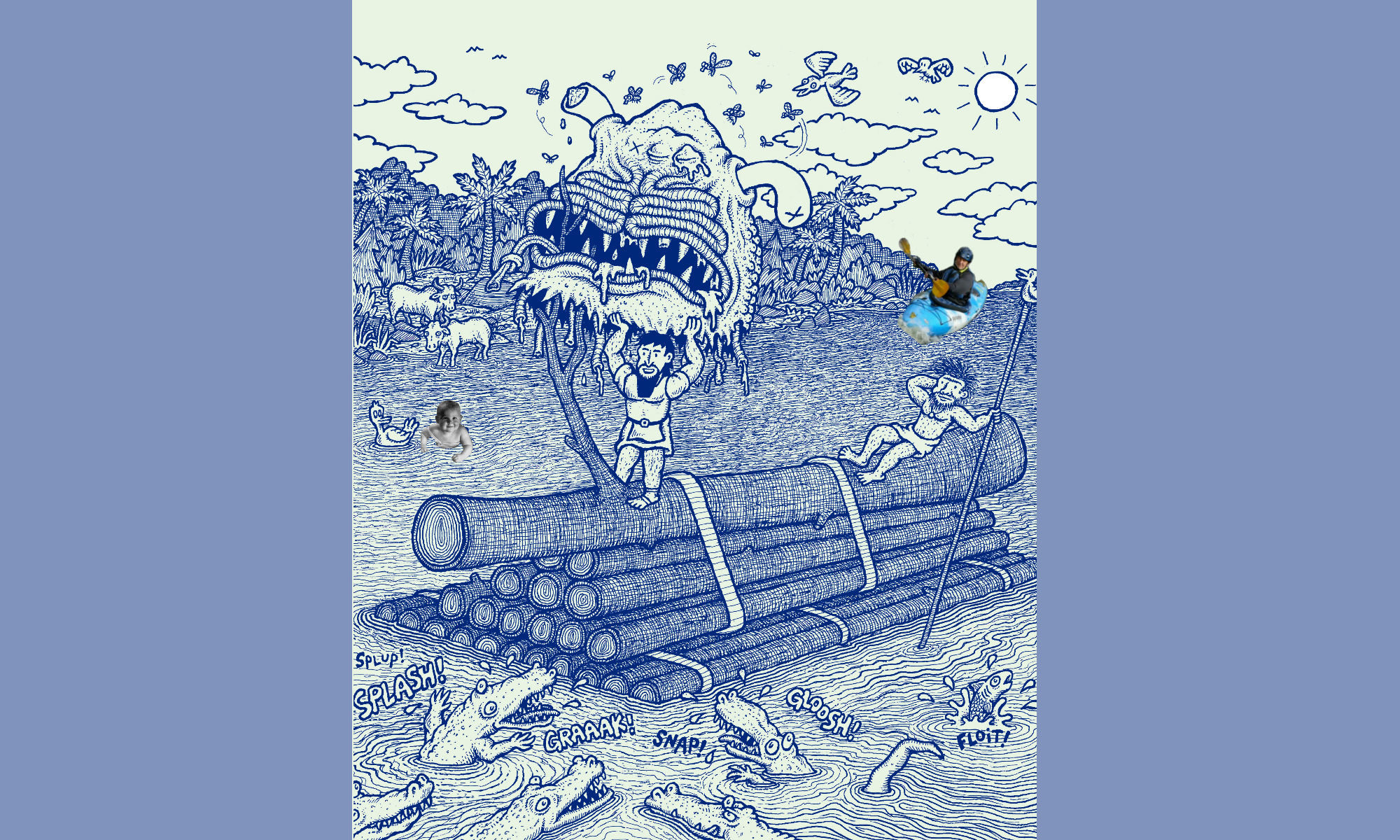Author…! Fancy that. Well, the word derives from the Latin auctoritas, which simply means authority. Those Romans felt they knew whereof they wrote—Friendship, Old Age, Happiness. Luck, leisure, gifts, marriage, the campaign in Gaul, the physical sciences (in the age of Nero yet). They knew plenty of everything, with very pronounced opinions to go with it.
In modern times, given a normally circuitous life, one does indeed come to know things, whether as so facilely said, a lot about a little or a little about a lot. I tend toward the latter, and my ‘authority,’ i.e. my writing, mostly wends it way through the debris of my dilettantish life (dilettare, to delight in), certainly with its share of quirks and surprises, but also its interests and choices, from the whimsical to the inevitable.
So I thought laying out a brief biography might provide a sufficient framework for the actual written work collected here—on teaching, on jail, on surgeons and Sirens and satyrs; on rivers and drowning and writing and translating. On grammar even. The thing is, this life of mine is getting to be a long one—over three quarters of a century now—I was a pre war baby—and combing back through, wondering who that kid really was, and why, and how’s he still alive anyway, and was it ok not to grow up until thirty, and is it too morbid to dwell as much as I do on it all ending? Not ‘ending it all.’ Not hardly, not this kid:
“Cures baldness, for what it’s worth.”For what it’s what? “Whoa, man, no shrugging allowed. This
is all we got, you know. The frog of life hunkers at the lily pad
and then hops on. You know? You have family, don’t you?”
“Sure, but I used to ski.”
From: “You Belong to Me,” The Georgia Review (1994)
So did I—water ski, and now it’s kayaking. But combing back through it all to get up to now objectifies it. I’m so far from most of it that it begins to appear as someone else’s life. Hence, in this elaborated ‘table of contents’ that follows, the 1st person “I” is disappeared. We’re going third person. I’m thinking of it as an advance extended epitaph, with written proofs springing up along side the daisies, all in their due season.
KENT H. DIXON was born in Miami Beach, Florida, six months before Pearl Harbor.
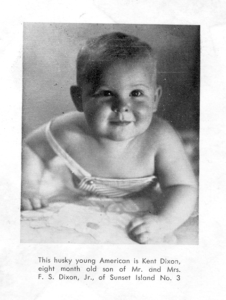
This ‘husky young American’ (were they recruiting me already? It was
early 1942) was there for and remembers pretty well the blackouts and Ration Books, and the mothers gathering in the kitchen to trade stamps and fuss about what coupon went with which item. His job to organize stacks by their pictures—gas, tires, sugar, meat, dry goods, certain clothes and soups. He remembers his father rummaging around for scrap metal collections, and endless aircraft passing
over, which he used to run and hide from. (The Japs are coming!) A few slogans have stuck: “Do with less so they’ll have enough.” “Loose lips sink ships.” SNAFU, the F standing for all fouled up the grown-ups explained.
Such images still waft around in recollect like parts of old songs. He remembers various live-in nurse maids—one of them actually German. Schulze. She was fun. Mam’selle, the French one, wasn’t. She figures significantly in a novella-in-flash, Tessellations, in the section FLASH, experimental in its time and an interesting stylistic influence—on me.
He remembers the day Roosevelt died: the only time he ever saw his father, albeit a staunch Republican like the rest of the family and not a particularly expressive guy either, cry.
He distinctly remembers the family gathered around the radio for Truman’s announcement of the A-bomb, August 1945. Why remember that: he’s barely four years old then. Maybe that’s one of those creative memories, comes along after the fact, out of a photograph or a family story, except etched there in clear-cut memory is the big old consol radio with its insufferable static and my parents and a couple of grandparents apportioned around the living room, on the couch, in the gold chair under the window, a stretch of the yellow-grey rug that turned a bilious green in shadow, dad on his knees muttering as he messed with the dials on that polished mahogany Philco. Was it obvious we’d entered a new age? I doubt it. Certainly not to me. I knew nothing of the Nazi death camps, for instance, much less internment camps out west, or which war was which—Germany, Japan, Africa, the world?—or even who in our extended family had died, of these wars. Adults kept things from you back then. I had to uncover such details on my own, on into my adolescence.
I dwell on the war here (back in first person) because that last half of the 1940s and first half of the 1950s was so formative for me, and remains dear, besides its being a treasure trove for my fiction and nonfiction. That post-war culture, the conditions, the attitudes, the explosive pop-ulation growth, the coming affluence of the fifties, is the
That post-war culture, the conditions, the attitudes, the explosive pop-ulation growth, the coming affluence of the fifties, is the
soil that nurtured me, wherein I flourished, multifariously to be sure.
The waters I sailed on, the groins and jetties and under-water anti-amphibious obstacles (against German invasion) that I spear-fished around; the bay I water-skied across (all the way to school in North Miami a few times), the beach combers I schmoozed with, the beach front hotels I got jobs at—the Fountainbleau, Eden Roc—they needed us to haul the beds and bureaus up the stairs because the elevators weren’t operational yet. Got paid in cash; we were under age.
My parents’ various sailboats and general sea-faring excursions—cruising off to the Bahamas or the Virgin Islands and parking me in boarding school. The bay separating the archipelago of Miami Beach from mainland Miami, that immense Biscayne Bay that I explored in my little eight foot pram—a dingy powered by a 3-hp outboard—as young as nine and ten.
See Obsession: [x] Kayak in KAYAKING, for an exploration I enjoyed writing, of what my water world meant, and what it’s become. Also in KAYAKING is a contest-winning essay on extreme sports and some moments of definite extremity—drowning.
See Bernie’s Hole, also in Sport Literate’s archives at:
http://sportliterate.org/2018/02/mid-range-essay-contest-winner/
 The canal by our house on Sunset Island No. III, the giant rubber tree hanging over it, providing shade and a clear view of the mullet and needlefish, crayfish and stone crabs, leopard rays and barracuda, and me with my gig. That large snook lurking under the dock: I never could get him but I sure learned to throw a javelin lying on my stomach looking upside down under the dock. It was a game with him, old Baby Snookums.
The canal by our house on Sunset Island No. III, the giant rubber tree hanging over it, providing shade and a clear view of the mullet and needlefish, crayfish and stone crabs, leopard rays and barracuda, and me with my gig. That large snook lurking under the dock: I never could get him but I sure learned to throw a javelin lying on my stomach looking upside down under the dock. It was a game with him, old Baby Snookums.
The magical hermitic time of an only child and all that water and stretches of shoreline, uninhabited islands and muggy tropical forests. A favorite short story of mine, because so evocative of that distant time, is about a manikin that my parents brought home from sailing one day, having rescued her from the briny bay. Who needs imaginary friends, when you have a real live manikin to play with?
Lorelei, in WRITING, one of the Miami Stories.
However, there was a downside to all this post-war freedom, for young Dixon. As he summarizes it in his anatomy of an obsession, in KAYAKING:
In short, and somewhat sappy, I think my parents neglected me.
They were party animals, post-World War II in Miami Beach, where
the 7th fleet had been stationed and the parties were solid state and just
because the war had ended and the 1950s rolled around, that was no reason for anyone to put up their cakes and ale. I remember police
arriving at our larger parties, responding to neighborhood noise com-
plaints, and before you knew it they were walking around in shirt
sleeves carrying their own drinks, letting me handle their guns. Hey,
mom, what can I say? This is what I remember.
Obsession: [x] Kayak, in Sport Literate, Vol. 10, Issue 1 (2016)
Off to the West Indies on a 50 foot sloop, they’d install little Kent in boarding school side of his day school, three months once, right through Christmas, 5th grade. He didn’t realize it then, in fact, he relished the almost unlimited freedom.
I didn’t know better at the time, but I came to realize it as an adult and to actually resent it, less adultly, in my fifties. But certainly I was reacting unconsciously to neglect back in my teens, when I would have been better off with the three months spent in Reform School.
Was it a cry for help? All the crazy shit he got himself into, and out of? Restrain me, fercrissakes, before I hurt myself. Or somebody else. Or was it just the seductive drug of absolute freedom, requiring small increments for the same thrill: I can do anything… let’s see, what can I do next? The essay that attempts to answer those questions should be lodged in the JAIL section, because though it’s central to The Miami Stories, it, as Dixon now feels about his younger self, really is more suited to prison. But it’s at the heart of the Miami of his fancy-free ‘bad boy’ teens, hence to be found in the 1950s Miami of houseboats and cabanas, call girls and Lumdogs: Sharkwalker, in WRITING.
Are readers old enough to remember that sixties Antonioni film Blow Up? A must see, if not. It opens with its fashion photographer hero Thomas (David Hemming) exiting a flop house where he’s spent the night shooting derelicts and homeless, so the film opens with him leaving that London dosshouse, loaded up with his equipment and ambling down the down the street to his waiting sports car.
Soon on, he’s in a park and sees a couple arguing, and shoots them on the sly. Inadvertently though, his camera has caught a figure in the bushes behind them. Back in his studio he enlarges it (‘blow up’), and curiosity piqued, he returns to the park, to find a body now where the face had been, and thus he’s handed a key role in a murder mystery.
The plot, the theme, almost of epistemology—as it is in the Julio Cortázar short story which was Antonioni’s source—how do we know things, how completely, how much gets away from us—we were going to say thickens, this plot, this theme, justly for Hemming but also for Dixon. Having taught creative writing in an Ohio jail, in the same town as his University job, for more than a year, he grafted the idea of doing a story on it: the fashion photographer and the flop house :: Dixon and his ‘friends in low places.’
But like Hemming’s character Thomas, he ‘blows up’ more than his standard lens had taken in.
Forty-eight Hours in the County Jail, in JAIL, works as a travel narrative, from book-in to bag-and-baggage out two days later, but with a personal essay’s peeled onion at the center. When asked by a friend why on earth let oneself be incarcerated:
Why to do a story, of course.
That wasn’t the story she wanted to hear. “It’s the story in front
of that,” she said. “I want to know why Kent wants to go to jail.”
I couldn’t really answer her.
~Forty-eight Hours…
He didn’t really know, but he found out mid-stream, in the way that essays deliver so well—self-discovery.
Also in that JAIL section, which complements several flash fictions  inspired by cellmates, posted in the special author issue of Open:Journal of Art & Literature, there’s another travel piece of a tour of a crack house, accumulated from inmates’ stories over the year of jail house bull-sessions and actual inmate writing output:
inspired by cellmates, posted in the special author issue of Open:Journal of Art & Literature, there’s another travel piece of a tour of a crack house, accumulated from inmates’ stories over the year of jail house bull-sessions and actual inmate writing output:
The House that Crack Built, in JAIL.
But it’s Sharkwalker and Forty-eight Hours that make the best complements.
Yet another potential jail piece—a travel narrative
on a trip to Cuba, and getting busted for it—is in the Miami Stories, in WRITING. It begins in Miami as many insights into Cuba do. That tale of two cities, though experienced in 2001 and not published till ten years later, transpiring when Cuba was choking with embargo and el leader was still very much in charge, still appears to have valid observations: From Batista to Fidel, and on to the Real Enemy of the People: ¡Viva la revolución!, in WRITING.
Harking back to go forward: prep school, college, with a double major and pre-med. Early pursuits of a medical career materialized into jobs as an orderly one summer and a scrub nurse in surgery another. Knock, Knock: A Deconstruction, in WRITING, gives a wild account of how much can go wrong in a routine operation, point of view of the 20 year old male scrub nurse.
Thence to graduate school, the one-year writing program at Johns Hopkins, then two years back at the prep school, teaching French and English, then more graduate school at University of Iowa, where Dixon probably set a record for the number of years it took him to get through. But the good news re that time was falling in with the writer Robert Coover—revisited fondly in an Interview with Dixon in OPEN:JA&L.
Coover’s workshop classes and general 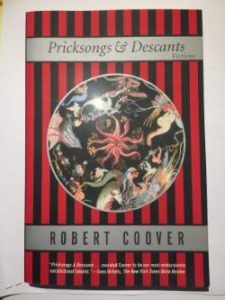 presence in Iowa City in those Viet Nam protest years, were an abiding influence on many, Dixon not the least of them. One collection-in-progress of Dixon short shorts, is actually inspired by a Coover story published in 1969 in his Pricksongs and Descants, the collection that established Coover’s brand of post-modernism—the retelling of myths and fairytales (and biblical stories) in ways that examine the assumptions behind them and even story-telling itself. His ‘fabulations,’ Google tells us, have influenced ‘a couple of generations of experimental writers, from Angela Carter to Dave Eggers.’
presence in Iowa City in those Viet Nam protest years, were an abiding influence on many, Dixon not the least of them. One collection-in-progress of Dixon short shorts, is actually inspired by a Coover story published in 1969 in his Pricksongs and Descants, the collection that established Coover’s brand of post-modernism—the retelling of myths and fairytales (and biblical stories) in ways that examine the assumptions behind them and even story-telling itself. His ‘fabulations,’ Google tells us, have influenced ‘a couple of generations of experimental writers, from Angela Carter to Dave Eggers.’
“J’s Marriage” is about an older man, a humble carpenter who marries a beautiful young woman, who puts off the consummation of their marriage until a showdown, when she allows as how she is—oops, already pregnant—by God no less. “J” is of course Joseph, mulling over all this in a lonely bar. Dixon came across another Joseph tale while reading various Infancy Gospels. It had such charm that he had to Cooverize it, and, as he says in his Interview in OPEN, the last line of his rendition of that little piece triggered an entire project, Not for Sunday School, not quite finished. But as for those vignettes that are finished . . .
 What did Mary think when the old man in the temple went down on his knees to her with her infant in his arms, and said, “And your soul too, Mary, shall be pierced by a sword.” Or, indeed, what did Joseph think, and do, when he came back from a trip to collect Mary at the temple, to find her pregnant yet be told not to worry, she was so chaste while he was away that an angel of the Lord appeared every day to feed her at her lips. If she should have conceived, it must have been by the Angel of the Lord. Both of these, along with a couple of others featuring the younger (and somewhat ‘bad boy’) Jesus, are in OPEN:JA&L, Something Else About Mary, and Joseph and the Angel of the Lord, in FLASH. Joseph is in OPEN’s Dixon/Flash section as well; Mary, nominated by OPEN for a Pushcart Prize, is at: http://ojalart.com/literary-arts/short-story-kent-dixons-something-else-about-mary/
What did Mary think when the old man in the temple went down on his knees to her with her infant in his arms, and said, “And your soul too, Mary, shall be pierced by a sword.” Or, indeed, what did Joseph think, and do, when he came back from a trip to collect Mary at the temple, to find her pregnant yet be told not to worry, she was so chaste while he was away that an angel of the Lord appeared every day to feed her at her lips. If she should have conceived, it must have been by the Angel of the Lord. Both of these, along with a couple of others featuring the younger (and somewhat ‘bad boy’) Jesus, are in OPEN:JA&L, Something Else About Mary, and Joseph and the Angel of the Lord, in FLASH. Joseph is in OPEN’s Dixon/Flash section as well; Mary, nominated by OPEN for a Pushcart Prize, is at: http://ojalart.com/literary-arts/short-story-kent-dixons-something-else-about-mary/
For a real treat, if you get that far, instead of reading it, arrow down to the bottom of the short short and click on: Hear Nishi Munshi read this selection
And then there was teaching. Thirty something years of it at the same university in southwestern Ohio: thirty something years of cooking up fun courses and seems like thirty more of grading papers. The slog and the glory of teaching writing . . . Dixon is wont to liken it to that gainsaid dichotomy in Augustine, about the thieves on the cross flanking Jesus:
—Do not despair: one of the thieves was saved.
—Do not presume: one of the thieves was damned.
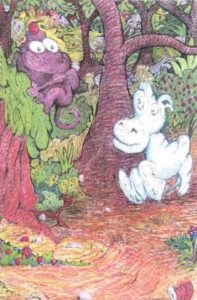 Like most English teachers, he loved the kids that came his way but fairly foundered in their ‘grammar anxiety,’ until he decided to try teaching punctuation and style without rules—more like music, largely by ear. The drudgery abated some-what, and in time he gathered the most common mistakes of Engl 101, and beyond, into a labyrinthine website with all ye need to know, instinctively, about apostrophes and case and commas and colons and call girls—no, but he does try to keep it light and entertaining:
Like most English teachers, he loved the kids that came his way but fairly foundered in their ‘grammar anxiety,’ until he decided to try teaching punctuation and style without rules—more like music, largely by ear. The drudgery abated some-what, and in time he gathered the most common mistakes of Engl 101, and beyond, into a labyrinthine website with all ye need to know, instinctively, about apostrophes and case and commas and colons and call girls—no, but he does try to keep it light and entertaining:
#Grammar4Dumbies, in GRAMMAR—
—which actually, in small doses, is a reasonably helpful reference site in our opinion. And there’s a Q&A platform: Grammar4Dumbies
if one’s particular demon isn’t covered, one can ask.
 His favorite course, however, was the Greeks (he’d have been a Classicist in another life, along side forensic pathologist, psychiatrist, architect, James Dean, and Go-Go dancer) laying out the main poets and historians, dramatists, philosophers, and the great epic bards, built along Thomas Cahill’s narrative of how we became who we are: Sailing the Wine-Dark Sea: Why the Greeks Matter.
His favorite course, however, was the Greeks (he’d have been a Classicist in another life, along side forensic pathologist, psychiatrist, architect, James Dean, and Go-Go dancer) laying out the main poets and historians, dramatists, philosophers, and the great epic bards, built along Thomas Cahill’s narrative of how we became who we are: Sailing the Wine-Dark Sea: Why the Greeks Matter.
But the epic doesn’t start with Homer. Dixon went to the earliest beginnings in the Sumerians and Assyrians, that first great work in Western literature—the Epic of Gilgamesh, though he was never satisfied with the translations. The students weren’t quite getting what he saw in that odyssey of a man seeking immortality, because the translations—and there are dozens of them—were either too free or too scholarly. You couldn’t get to a stirring read, both reliable as to the original and uncluttered enough to create a firsthand feeling.
One day, trying to decide among translations to order for the class, he asked himself what would he want, how would he do it? That lead to consulting dozens of translations all at once, line by line comparisons, to gradually, column by column, tablet by tablet, make his own—called a rendition. But Dixon also took a Cuneiform-by-mail course from the University of Chicago’s Oriental Institute; so he could look up individual words and uses, in the original. This took over a year. Somewhere in there he convinced his son, an underground cartoonist, to take it on as a comic. Ten years later, lo,
https://www.sevenstories.com/books/4052-the-epic-of-gilgamesh
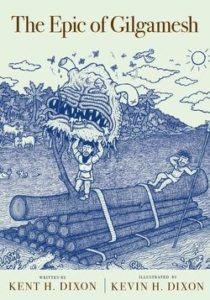 The Dixons’ 200 page graphic novel of Gilgamesh and his bosom buddy Enkidu, and the lions and monsters and goddesses and holy hookers, and Noah’s ark some 2500 years before Noah, is available both at Amazon and Seven Stories Press as of March 20. Pre-order now!
The Dixons’ 200 page graphic novel of Gilgamesh and his bosom buddy Enkidu, and the lions and monsters and goddesses and holy hookers, and Noah’s ark some 2500 years before Noah, is available both at Amazon and Seven Stories Press as of March 20. Pre-order now!
For more details, cf. Gilgamesh in GILGAMESH, which contains Artist’s Statement, Translator’s Note, pictures, and a short history of the making of the Dixons’ version, and some excerpts from the graphic novel itself.
In TRANSLATIONS, this website, is a selection from the range of actual translations (not renditions)—of some French Symbolists, Rilke, Sappho, et al. Of particular interest in the French, is his conversion of Mallarmé’s L’Après-midi d’un Faune arranged into a screenplay, to better capture, he says, all the over-lapping voices in that long and difficult monologue.
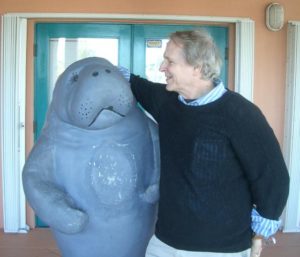
In FLASH is a short collection of short shorts, to provide some variety to those posted in the journal OPEN:JA&L, plus an essay on the form and some remarks about its history.
Finally, in the spirit of wishing peace on earth, climate control, and good will to all, he’s included a short piece on his own sanguine personality:
Mellow Yellow Fellow, WRITING.
It’s hard, he acknowledges, to write positively about oneself. The ego veneer is like listening to someone telling you their dream. It’s vaguely repellant.
So Mellow Yellow is an an experiment where he’s tried to tip-toe (or pirouette) through that minefield of self-regard. It’s interesting for that, at least, plus everything you’d ever care to know about the color yellow. Ichorrigible, q.v.
List of Section Links and Contents — Flash, Writing, Kayaking, Translation, Jail, Gilgamesh, and Grammar4Dumbies. You are currently in Author.
TRANSLATIONS
Original translations of Baudelaire, Mallarmé, Rilke, Sappho. Some commentary on several of the poems.
FLASH
Sampling of variety of short shorts, a complement to those posted in OPEN:JA&L Also some complementary essays on the form, its history, and odd asides, branching off from the like in OPEN.
WRITING
Selection of fiction & non-fiction, mostly from an unpublished though circulating collection, The Miami Stories. (Agent alert!)
KAYKING
Two non-fiction essays, one an anatomy of the writer’s obsession with the sport, the other on the sport itself, a left-handed vindication of its extreme-ness. A delightful and nostalgic picture gallery there, too. And video.
GILGAMESH
A shameless promotion of a graphic novel of The Epic of Gilgamesh, a father and son collaboration, available as of March 20. The section here contains Artist’s Statement, Translator’s Note, and a brief history of the making of the thing—brief in the account of it, that is, not in the time it took to actually get it done.
#GRAMMAR
Provides a link to an elaborate website, Grammar4Dumbies, which attempts to address the most common errors of grammar and punctuation plaguing novice writers. Explanations work out of history and style, rather than from Rules. Useful and even amusing, in small doses. Question/Answer format provided.
AUTHOR
This website section you are now reading. Below is a short linkable annotated list of all work mentioned in this same Author bio-section.
List of work/links in AUTHOR section, in order of appearance:
Tessellations in FLASH
Excerpt of an early novella-in-flash, and discussion. Published in Northeast, 1974. How juvenilia matures, or doesn’t.
Obsession: [ x ] Kayak in KAYAKING
Essay: the anatomy of an obsession. Published in Sport Literate, 2016.
Bernie’s Hole: A Meditation on the Superman, or Maybe Just on Clark Kent,
in KAYAKING Contest winner in Sport Literate, 2016
and archived at: http://sportliterate.org/2018/02/mid-range-essay-contest-winner/
Lorelei in WRITING (The Miami Stories)
Short story of a boy and a naughty ‘big sister.’ Published in Shenandoah, 1991.
48 Hours in the County Jail in JAIL
Travel narrative: author spends two days as an inmate in the county jail, incognito, and learns more than he bargained for. Published in Grand Tour: the Journal of Travel Literature, 1997.
The House that Crack Built in JAIL Travel: a collective report on a trip to a crack house, by the inmates of the Clark County Jail, with K. Dixon as managing writer.
Published in The American Prospect, 1993.
From Batista to Fidel, & on To the Real Enemy of the People: ¡Viva la revolución in WRITING (The Miami Stories)
A travel piece on a trip to Cuba, 2001, with some minor problems with Customs on the way back through Houston. The major problems are solved in the essay, to our mind.
Knock, Knock: A Deconstruction in WRITING
A brief account of a terrible, no good, very bad day in surgery, as told by the 21 year old scrub nurse. Published on line in UVA medical school’s Hospital Drive, circa 2013.
OPEN: Journal of Art & Literature presenting a special author issue on
Dixon and his flash fiction. At: http://ojalart.com/literary-arts-fiction-flashfiction/
The journal’s Pushcart nomination for Dixon’s “Something Else About Mary” is at: http://ojalart.com/literary-arts/short-story-kent-dixons-something-else-about-mary/
Gramma4Dumbies in GRAMMAR
A separate website, linkable from within GRAMMAR. It’s a compilation of the 20 to 30 most common mistakes in grammar and punctuation, that novice writers make, with how to fix them while keeping Rules, which are part of the problem, at a minimum. A Question-and-Answer platform is there: stump the expert.
The Epic of Gilgamesh in GILGAMESH
Contents: Artist’s Statement, Translator’s Note, a short history of the collaboration, with pictures, and a sample chapter. The entire graphic novel, of the entire epic, with the most up-to-date discoveries of text, can be pre-ordered now, at Seven Stories Press:
https://www.sevenstories.com/books/4052-the-epic-of-gilgamesh
Or at Amazon:
https://www.amazon.com/s/ref=nb_sb_noss_2?url=search-alias%3Dstripbooks&field-keywords=the+epic+of+gilgamesh%2C+dixon
L’Après-midi d’un Faune in TRANSLATIONS This is Stephan Mallarmé’s long monologic poem, Afternoon of a Faun, rendered here as a screenplay. That format helps clarify the numerous voices swimming around in this difficult, but worth reading, poem. TRANSLATIONS Other translations in this section are of Baudelaire, Rilke, Sappho, and a parable by the Gospel writer Luke.
FLASH In the section FLASH, a selection of a variety of flash fictions, to give some breadth to those posted in the on-line journal, OPEN: Journal of Art & Literature, which is at: http://ojalart.com/literary-arts-fiction-flashfiction/
Mellow Yellow Fellow in WRITING A disquisition on the color yellow, that spills over into a sunny disposition. Only the purest of heart can tip his apple cart.

